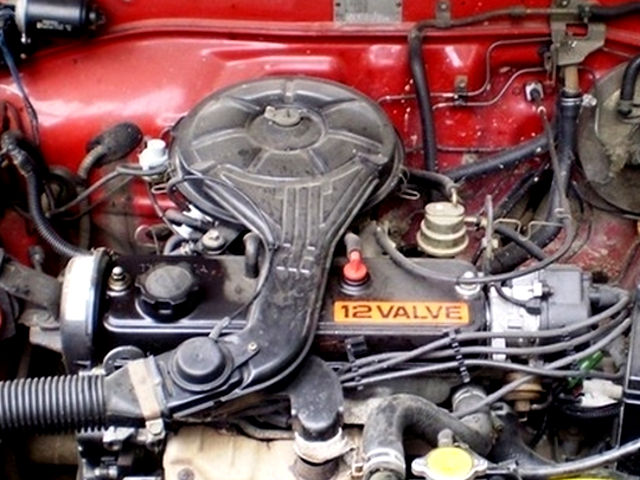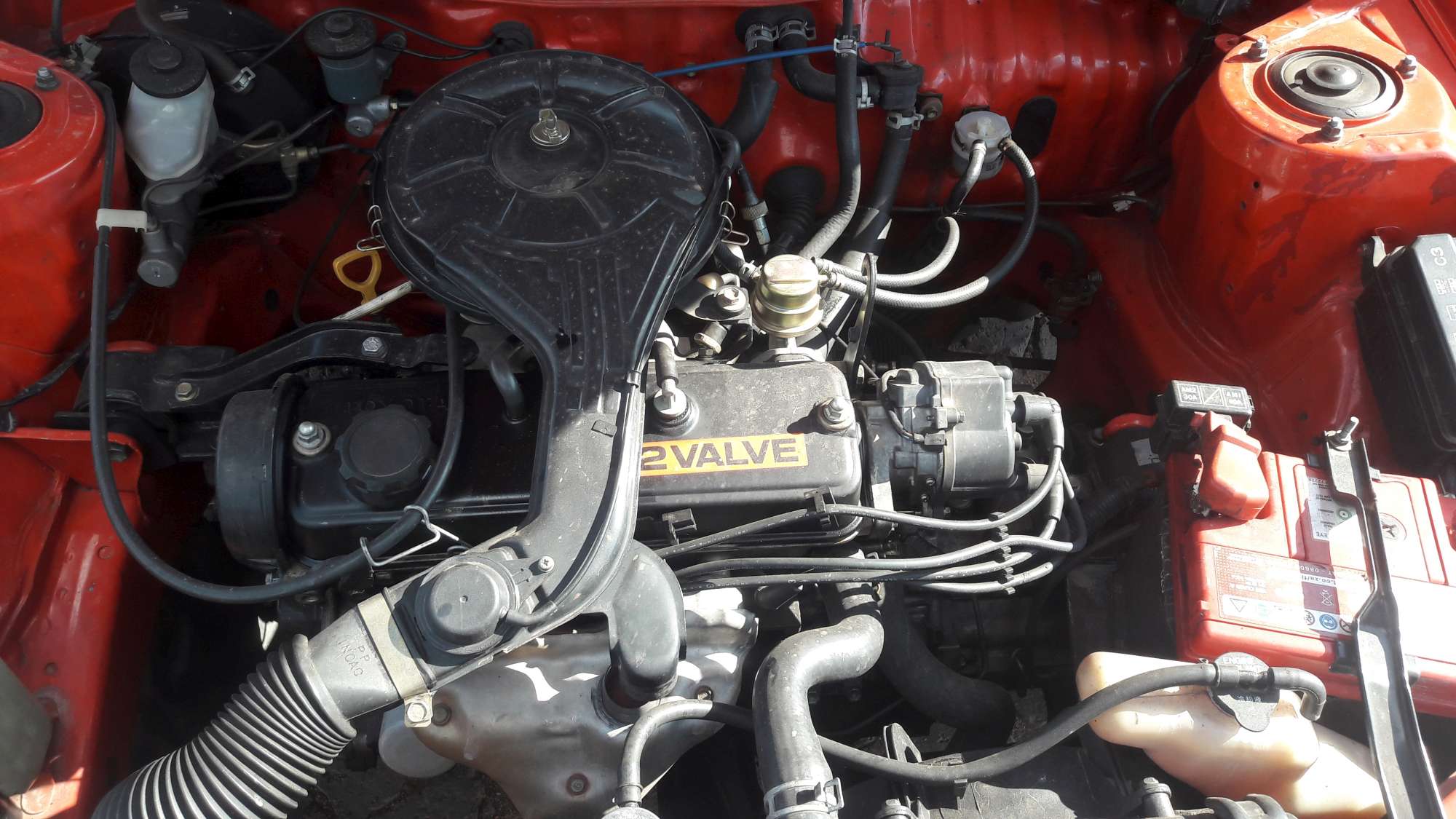Toyota Tazz: An Affordable Car That Doesn’t Compromise on Quality
Toyota Tazz: An Affordable Car That Doesn’t Compromise on Quality
Blog Article
Check Out the most recent Trends in Engine Innovation With Tazz
In the swiftly advancing landscape of automobile technology, Tazz stands at the forefront, highlighting considerable developments in engine systems that focus on both technology and sustainability. tazz. From hybrid engines that maximize fuel effectiveness to the emergence of hydrogen gas cells, the trends forming modern-day powertrains are not only enhancing efficiency but additionally addressing important environmental challenges. As the market continues to press limits, it is vital to take into consideration exactly how these growths will affect future transport options and the broader implications for worldwide power intake. What exists in advance in this pivotal improvement?
Hybrid Engine Innovations
Hybrid engine developments represent a critical change in auto modern technology, combining the benefits of inner combustion engines with electric propulsion systems. This integration not only improves gas performance but additionally decreases exhausts, meeting progressively rigid ecological policies. By using both power resources, hybrid engines can enhance efficiency, supplying power when needed while saving gas during much less demanding motoring conditions.
Recent improvements in hybrid technology include renovations in battery effectiveness and regenerative braking systems. These innovations permit for greater power healing throughout deceleration, which can be redirected to help in velocity or power auxiliary systems. Additionally, makers are focusing on compact styles and lightweight materials to optimize the performance of crossbreed powertrains.
The advancement of plug-in hybrids has also expanded the marketplace, making it possible for drivers to charge their vehicles utilizing basic electric outlets. This function often permits significant all-electric variety, more lowering dependence on conventional gas. tazz. As the vehicle sector remains to develop, hybrid engine modern technologies are expected to play a crucial function in linking the void between conventional lorries and completely electric designs, giving a transitional option that deals with diverse customer needs and choices
Breakthroughs in Electric Powertrains
The vehicle landscape is rapidly evolving, with electric powertrains emerging as a leading pressure in lasting transport. Advancements in electrical car (EV) modern technology are substantially improving efficiency, customer, and performance experience. Key developments consist of renovations in battery chemistry, which have actually enhanced energy density, minimized charging times, and prolonged general battery life.
Solid-state batteries, as an example, assure to reinvent the marketplace by giving greater safety and performance compared to conventional lithium-ion cells. Improvements in regenerative braking systems are allowing lorries to recover energy during deceleration, contributing to total effectiveness.
In enhancement to battery innovation, electrical motor designs are becoming more innovative. Innovations such as incorporated electric motors and progressed thermal monitoring systems are aiding to optimize power distribution and reduce weight, eventually improving automobile dynamics.

Collectively, these developments highlight the dedication to shift in the direction of cleaner, much more efficient transportation options, positioning electric powertrains at the center of vehicle advancement.
The Surge of Hydrogen Gas Cells
Progressively, hydrogen gas cells are gaining grip as a practical alternative to standard internal burning engines and battery electric vehicles. This technology uses the chemical power saved in hydrogen, converting it into electricity with an electrochemical reaction with oxygen. The primary by-product of this procedure is water, making hydrogen gas cells an environmentally pleasant option with no emissions at the tailpipe.

Car manufacturers are significantly purchasing hydrogen fuel cell innovation, acknowledging its capacity for long-range applications and fast refueling abilities that measure up to traditional fuels. In addition, fields such as heavy-duty transportation and public transportation are especially well-suited for hydrogen gas cells, where battery electric solutions might drop short as a result of weight and variety restrictions.
As research and investment proceed to broaden, hydrogen gas cells are positioned to play a significant duty in the future landscape of tidy transportation and energy solutions.
Enhancements in Internal Burning Engines
Advancements in internal combustion engine (ICE) modern technology are transforming typical cars to fulfill contemporary ecological standards and performance my latest blog post assumptions. Straight gas injection, for circumstances, allows for better atomization of fuel, leading to more total combustion and enhanced power outcome.
Furthermore, turbocharging has actually gotten prominence, enabling smaller engines to supply higher efficiency without the weight of bigger engines - tazz. This innovation not just increases efficiency but additionally adds to reduce fuel usage. Variable shutoff timing systems are check these guys out also being refined, allowing engines to adjust to various driving conditions for enhanced torque and responsiveness
Additionally, making use of light-weight materials in engine construction is coming to be standard, further boosting gas effectiveness by reducing overall vehicle weight. Engine control units (ECUs) are progressively innovative, making it possible for real-time changes that enhance performance and exhausts.
These improvements jointly represent a critical shift in ICE modern technology, straightening with worldwide sustainability goals while still supplying the efficiency chauffeurs anticipate from their automobiles. As the industry develops, these renovations remain to shape the future of typical vehicle engineering.
Future Fads in Engine Performance
Substantial innovations in engine performance are prepared for as suppliers focus on integrating innovative technologies to fulfill rigid environmental guidelines and consumer demands. The shift in the direction of electrification, crossbreed systems, and different gas is reshaping the vehicle landscape, driving innovations that boost gas economy and reduce exhausts.
Among the crucial patterns is the execution of advanced products and manufacturing methods. High-strength alloys and light-weight compounds contribute to lowered lorry weight, therefore improving general effectiveness. Additionally, the adoption of turbocharging and variable valve timing modern technologies permits enhanced power outcome from smaller sized engines, even more improving fuel economy.

Conclusion
Finally, the exploration of engine technology exposes significant advancements that focus on sustainability and like it effectiveness. Technologies in hybrid engine systems, electrical powertrains, and hydrogen gas cells show a commitment to decreasing exhausts while improving performance. Moreover, enhancements in inner combustion engines and an emphasis on light-weight materials add to total engine efficiency. As the auto sector remains to progress, these trends will certainly play a critical function fit a cleaner and more lasting future for transportation.
From crossbreed engines that maximize gas effectiveness to the development of hydrogen fuel cells, the fads forming modern-day powertrains are not just boosting performance but additionally dealing with vital ecological difficulties.Crossbreed engine innovations stand for an essential change in automotive modern technology, combining the advantages of inner burning engines with electric propulsion systems.Additionally, turbocharging has obtained importance, enabling smaller engines to supply greater efficiency without the weight of larger engines. Furthermore, the fostering of turbocharging and variable shutoff timing innovations allows for boosted power result from smaller sized engines, further improving gas economy.
Renovations in inner burning engines and a focus on lightweight materials add to general engine effectiveness.
Report this page